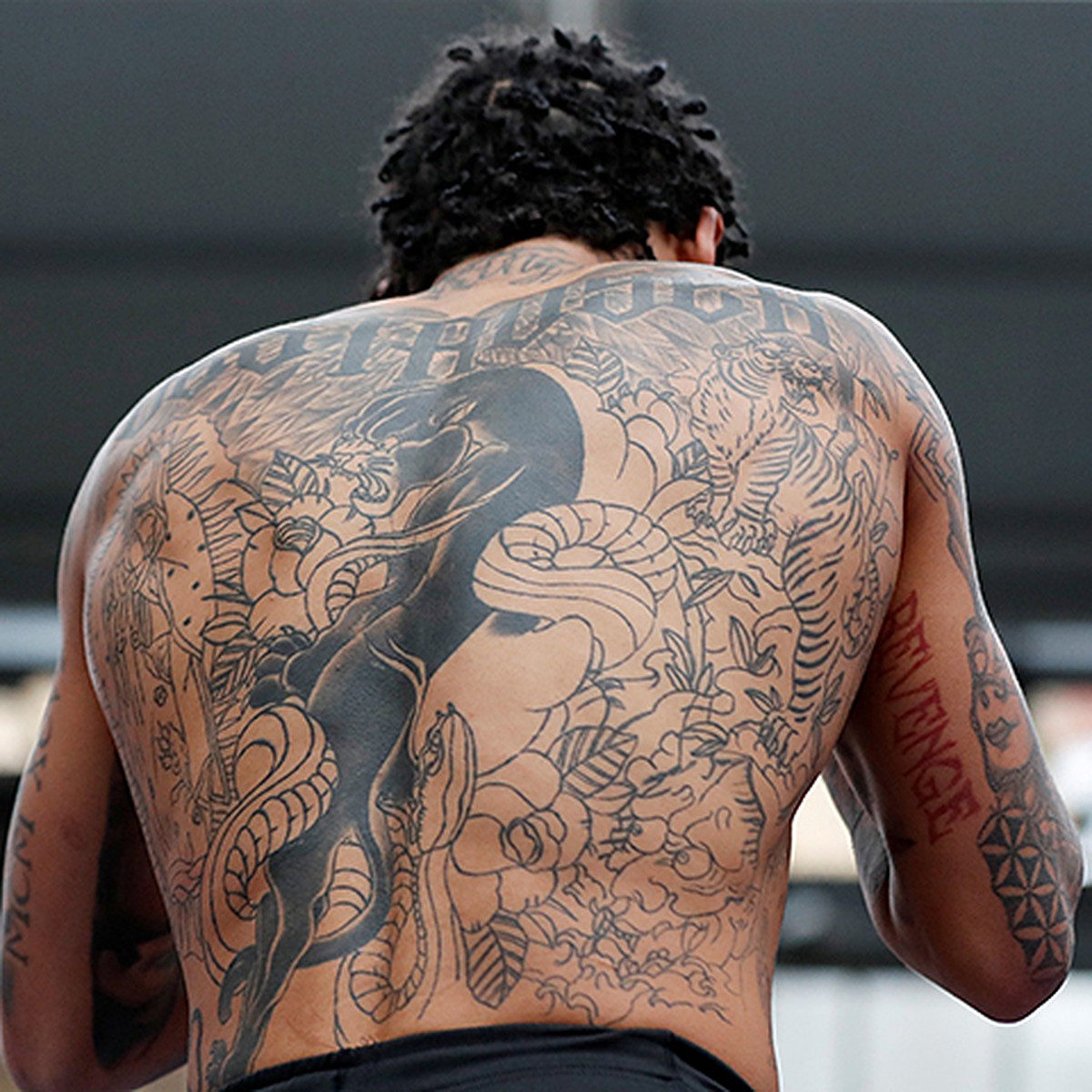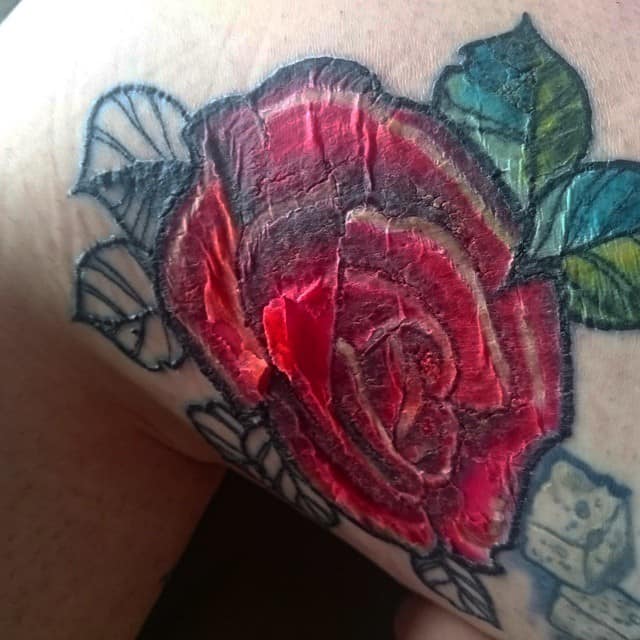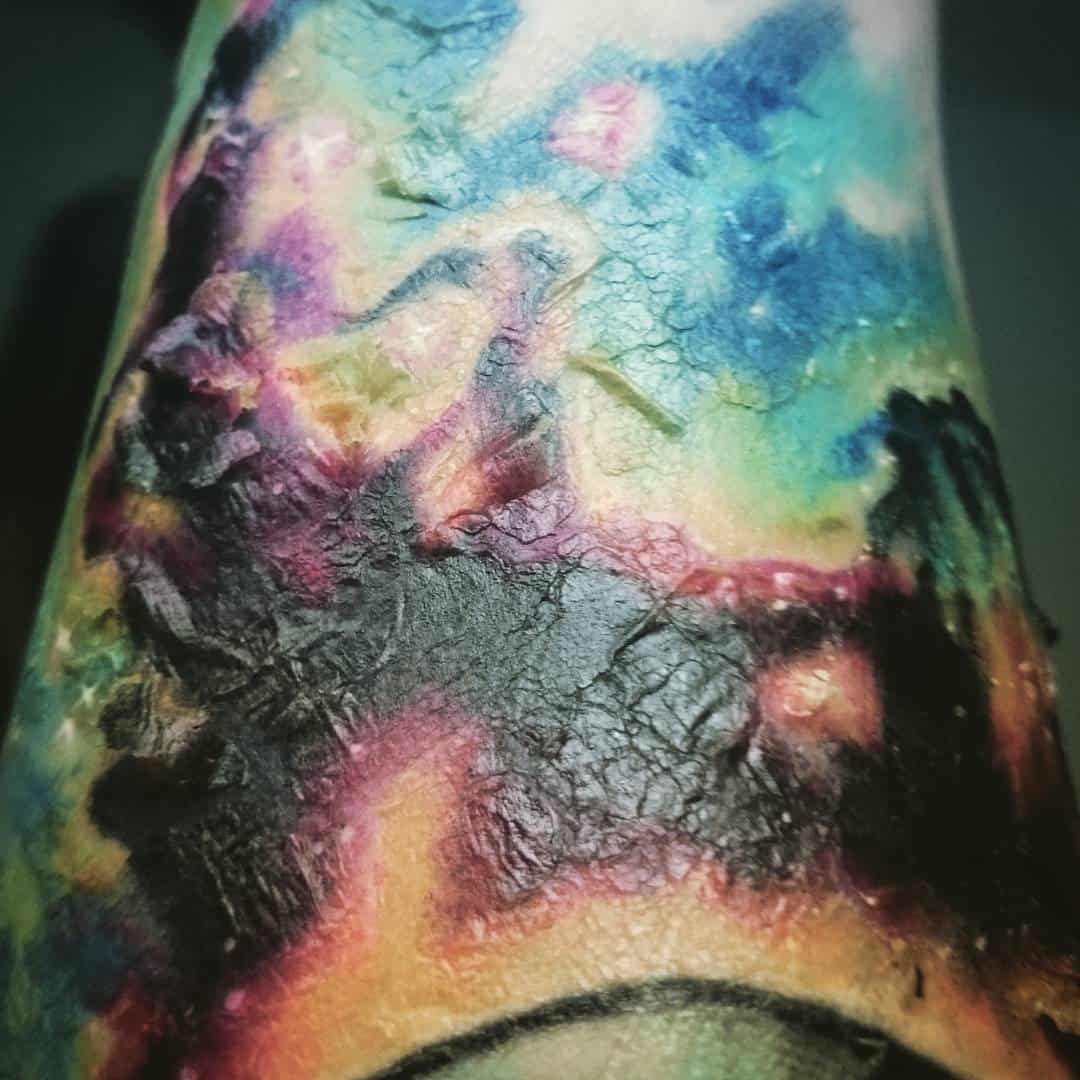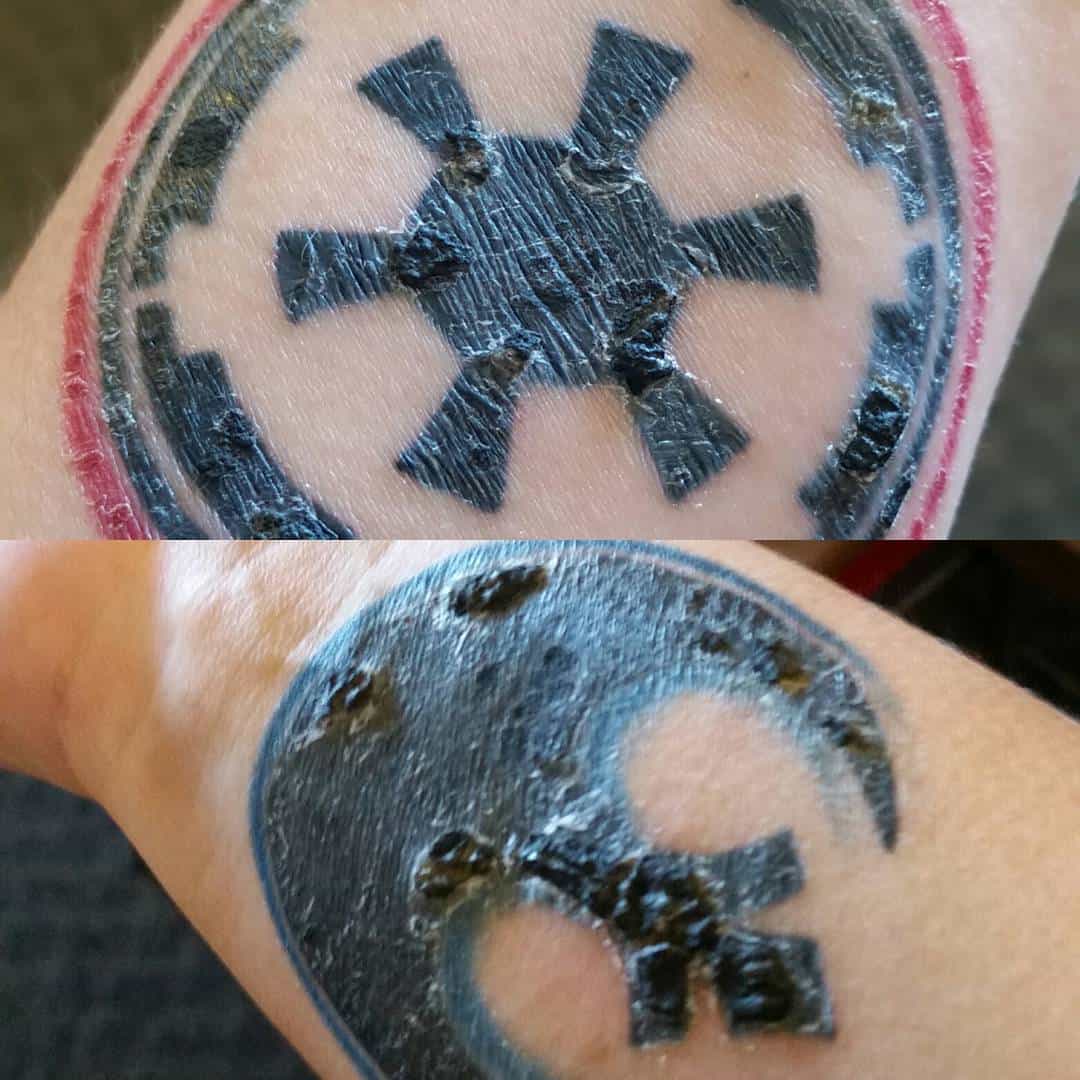
Bleeding scab with a tattoo: why does it happen and how to prevent it?
Contents:
If you are reading this, chances are you just got a tattoo for the first time and are dealing with tattoo scabs. We know that scabs can seem scary, but there is a reason why they form. But if the scabs start to bleed, you may be dealing with a serious underlying problem. So, if you've noticed that your tattoo scabs are bleeding, you've come to the right place.
Getting information on this issue is essential for your next steps, so be sure to keep reading. In the following paragraphs, we'll cover everything you need to know about tattoo scabs, bleeding, and how to prevent or manage them. So, without further ado, let's get started!
Tattoo scabs: everything you need to know
What are scabs?
A tattoo eschar or eschar, generally speaking, is a layer of protective tissue that forms over damaged skin. Remember when you were little, playing in the park, how every time you fell, some kind of crust formed on the spot where you hurt yourself. This crust has formed to protect the skin underneath and help it regenerate in a safe environment.
Scabs, to some extent, are completely normal. They usually dry out as the skin heals and then just fall off on their own.

Why do scabs form on tattoos?
As we have already mentioned, scabs form over damaged or injured skin. Now a tattoo, no matter how it seems, damages the skin, so a fresh tattoo is considered an open wound. And, like any other wound and injury, a tattoo also needs to heal.
It may take a few weeks for the tattoo to fully heal, but the first 7-10 days are critical to sealing the skin. This is when tattoo scabs begin to form to make sure that the tattooed skin underneath heals properly and closes the wound at the same time. You can expect scabs to start forming a day or 4 after the tattoo has healed.

How long do scabs stay on a tattoo?
Now, depending on a variety of factors, tattoo scabs can last anywhere from one to two weeks. The thickest scabs should fall off by the end of the third week in the healing process. Some of the factors that affect the rate at which scabs form and how long they remain on the skin are:
- Tattoo Placement
- Tattoo size and color
- Skin type and skin sensitivity
- Personal healing time (depending on your health and body's ability to deal with tattoo and ink)
- Weather and air temperature
- Hydration and hydration of the skin
- Nutrition, diet and general health and metabolism
So tattoo scabs are normal?
Yes, to some extent tattoo scabs are perfectly normal and even expected and preferred in the healing process. The scab allows the tattoo to close and complete the healing process.
However, only a thin layer of eschar is considered normal. The crust should be light and look like it's drying out and about to fall off.
But, if the scabs are thick and heavy, or there are a lot of them, then you should be wary. Severe scabs can be a sign of improper healing, an allergy to ink, or even an infection. But along with scabs, such phenomena are accompanied by swelling of the skin, redness, pain, weeping, bleeding, and even high fever.

How should I take care of tattoo scabs?
One of the most important things when it comes to scabs is that you should never touch or take them off. This can completely ruin the tattoo design and allow bacteria to enter the tattoo. You can indirectly cause a tattoo infection by fiddling with scabs, and you don't want that kind of problem.
Other than that, you can focus on properly moisturizing your tattoo once or twice a day to keep your skin hydrated. This will prevent the formation of strong scabs and also ensure that they dry out and fall off quickly and easily.
Always wash your hands thoroughly with mild antibacterial soap before dampening or touching your tattoo. You don't want to introduce germs and bacteria into an open, healing wound.
Why are my tattoo scabs bleeding?
Now, there are several reasons why a tattoo scan bleeds; these reasons are either caused by you or the underlying problem.
When bleeding is caused by you, we mean that you have committed a sin considered mortal in the tattoo community; collecting scabs of a fresh tattoo. By picking and scraping off the scabs, you can undermine the tattoo's healing up to this point and expose sensitive, freshly tattooed skin again.
This means that your tattoo has to heal from the beginning, which is more risky now than it used to be. Why? Well, now you've introduced bacteria and germs into your healing tattoo, which can lead to infection. In addition, you could ruin the design and even cause ink to leak.
However, if you haven't touched or removed the scabs, but they still bleed, you're likely dealing with either an ink allergy or a tattoo infection. However, bleeding from scabs is not the only sign that you are dealing with an allergic reaction or infection.
Both are accompanied by redness, swelling of the skin, excessive itching, rash, lifting of the tattoo, etc. Some people even experience fatigue, increased pain at the tattoo site, vomiting, fever. In such cases, emergency medical care is paramount.
So, we can conclude that the bleeding of the scab never occurs out of the blue. This is caused by some external factor such as sloughing off the scabs, or internal inflammation caused by an allergic reaction to the ink or an infection.
What to do if the scabs bleed?
If you have touched or removed the scabs, here is how you can manage the bleeding:
- Contact your tattoo artist – explain to your tattoo artists what happened and ask them for advice. Tattoo artists deal with different clients all the time, so they're no strangers to people picking and removing scabs. Tattoo artists are experts and professionals, so your personal tattoo artist needs to know how to help your tattoo continue its proper healing process.
- Don't forget to clean the tattoo - the best thing you can do in case of a bleeding scab is to wash it and clean it. Be sure to use a mild antibacterial tattoo soap as well as warm water. After you've washed everything off, pat the tattoo dry with a clean towel.
Do not use paper towel as it may stick to the tattoo and cause additional problems. Also, don't forget the towel as well, as the remaining scabs can get caught on the towel; if you click on them, you can also take them off.
- Keep your tattoo moisturized - after you have washed and dried the tattoo, be sure to apply moisturizers. Try to use treatments containing panthenol to help your skin recover and heal faster without creating another layer of scabs.
Be sure to moisturize your tattoo at least twice a day, especially after washing, to prevent it from drying out. A dry tattoo most often occurs due to a strong crust that can lead to itching, cracking, potential bleeding, and infections.
- Consider booking a retouching session - Now the problem with tattoo scab bleeding is that it opens the way for ink to leak. Because of this, you can expect a fully healed tattoo to look different than you imagined. So you can also book a retouching session when the tattoo is completely healed. Your tattoo artist will take care of fixing the broken parts and making sure the tattoo looks like the original design.
- Do not touch, pluck, or scrape off any new or remaining scabs. is a mortal sin that you should already have. But, I repeat, do not touch, pluck or scrape off newly formed or remaining scabs. This can lead to further bleeding, more severe scabs, swelling of the skin, ink leakage, and finally infection.
If your tattoo scabs are bleeding but you haven't taken them off or removed, you may be dealing with an infection or an allergy to the ink. Either way, you should probably seek medical attention and get the right diagnosis and treatment. Tattoo infections and ink allergies usually also come with symptoms such as ink bleed, skin swelling, redness, rash, increased pain, and even fever. So keep an eye on these symptoms to get a better idea of what might be going on with your tattoo.
Final thoughts
Fading on tattoos is normal. You don't have to worry about small tattoo scratches; it will eventually dry out and fall off, revealing a perfectly healed tattoo. However, if you touch, pick up, or peel off the tattoo scabs, you can expect bleeding and some damage to the tattoo. This will greatly complicate the normally smooth healing process.
On the other hand, if tattoo scabs start to bleed on their own, you should probably go to the hospital and see if you're dealing with a tattoo infection or ink allergy. Either way, proper treatment will help you deal with this situation, and a quick tattoo fix will make your tattoo look good again.
Leave a Reply